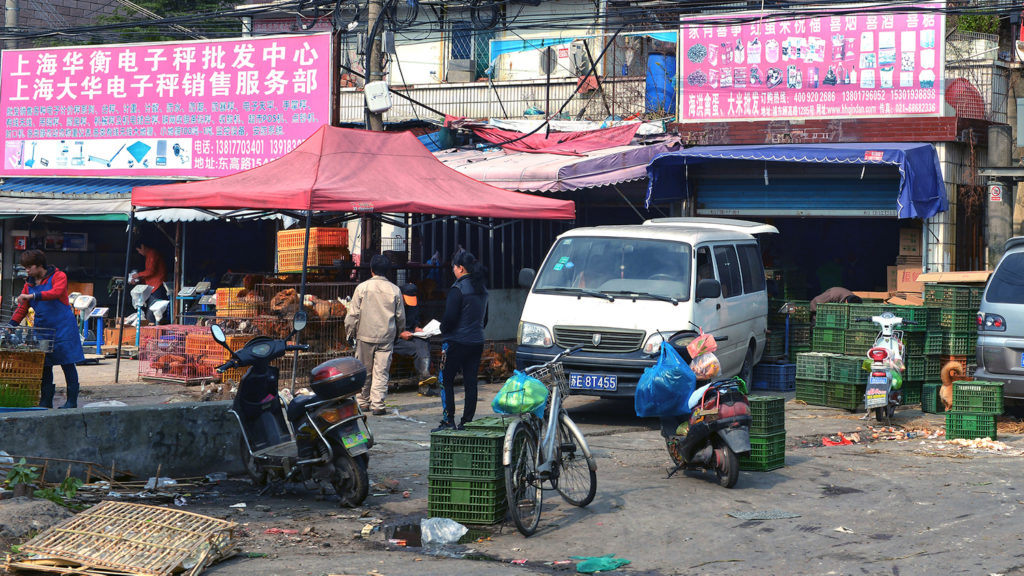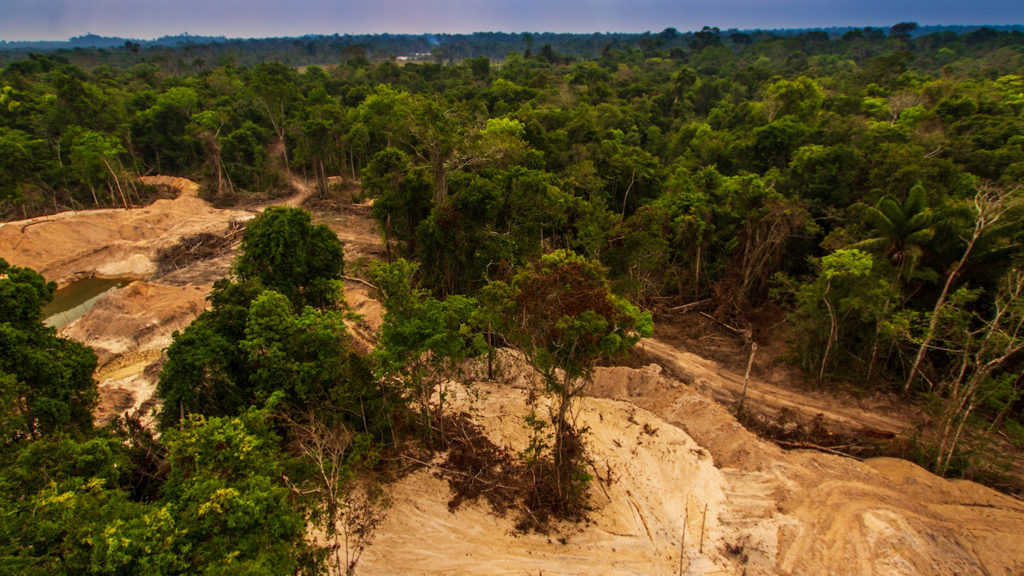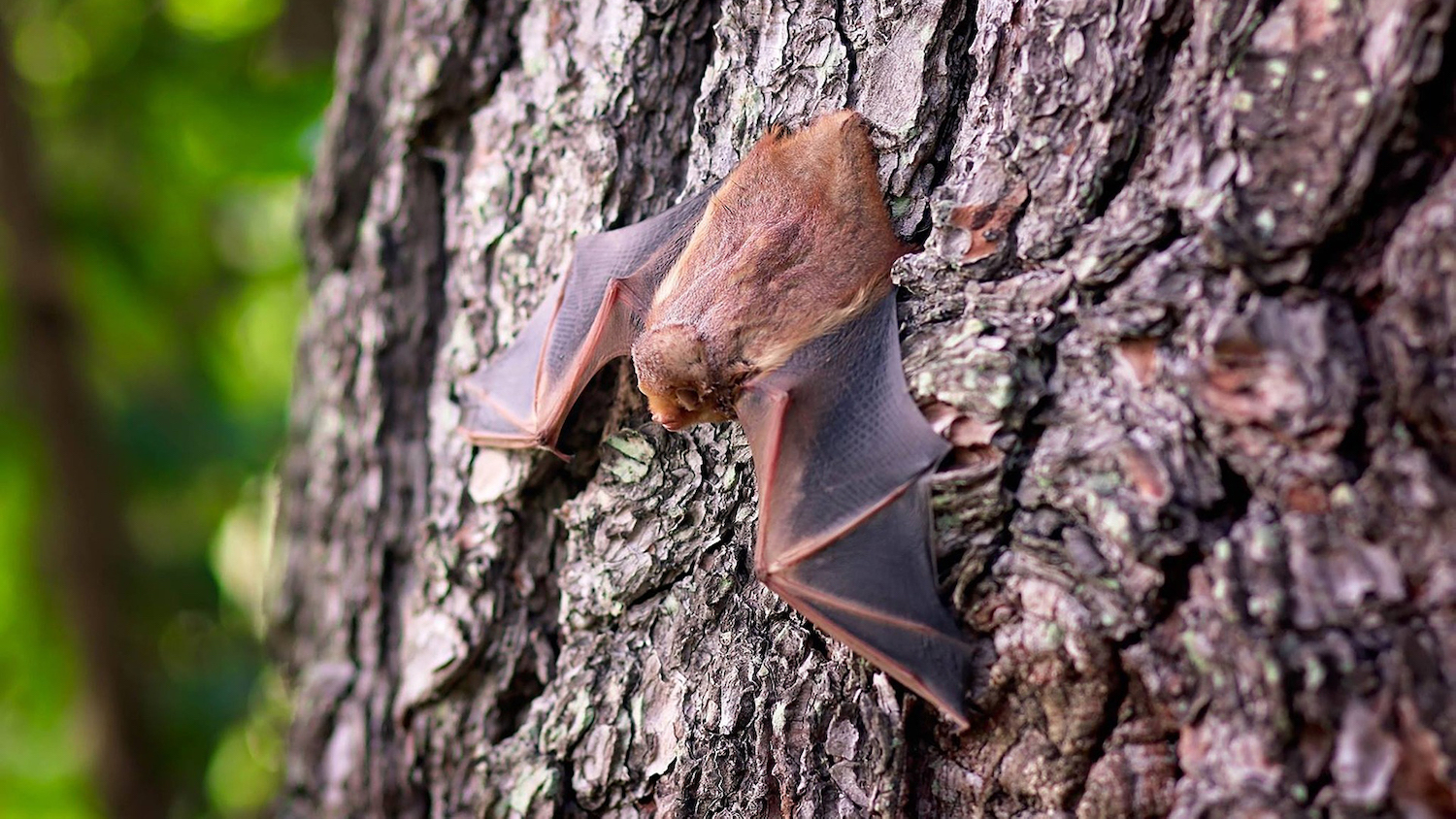Wildlife habitats are vital to human survival and agricultural production. But these natural places — and the plants and animals that inhabit them — face increasing pressure from human activity, leading to the emergence of new animal-to-human transmitted diseases like COVID-19.
This transfer, also known as zoonosis, occurs when an infection carried by an animal, like a bat in the case of COVID-19, is transmissible to a human. Six out of every 10 infectious diseases in people are zoonotic, according to Dr. Roland Kays, a Research Professor in the Department of Forestry and Environmental Resources at NC State’s College of Natural Resources. Other zoonotic diseases to emerge in the past couple of decades have included SARS, H1N1, or the “swine flu,” and AIDS.
“Some of the worst diseases have emerged from illegal wildlife markets,” Kays said. “The animals are sort of stacked on top of each other, they’re usually still alive, they’re still breathing and defecating, so it’s a very good place for viruses to spread.”
Over the past decade, the illegal wildlife trade, which is a multibillion-dollar industry, has become substantially worse. The trade has become further organized, and it has lacked sufficient intervention from authorities. In March, the Chinese government enacted a permanent ban on the trade and consumption of wild animals following the global outbreak of COVID-19.
“With this international shipping of wildlife, from Africa to Asia and from different parts of North America, many of us are hoping that authorities will finally take this crime seriously now that they realize some of the human health implications of it,” Kays said. “This is the worst one, but it certainly isn’t the first one, and it’s not going to be the last one if we don’t stop it.”

But wildlife markets aren’t the only sources of zoonotic diseases. As humans continue to convert wildlife habitats and encroach on them for hunting and gathering purposes, they are setting themselves up for the further spread of disease.
“People are displaced into natural habitats because they don’t have good alternatives,” explained Dr. Erin Sills, the Edwin F. Conger Professor and Associate Head of the Department of Forestry and Environmental Resources. “They’re coming into more direct contact with a wider range of wildlife and creating the conditions under which we are likely to see more of these diseases emerge.”
She added that other factors enable diseases to cross from animals to humans. For example, illegal logging accounts for a large portion of the timber harvested in major tropical forest regions like the Amazon and Congo basins. These illegal activities typically offer poor working conditions, forcing crews to work without access to enough food and to rely on wild resources instead.
“To some degree, that’s traditional. But when you have more people with less food security because they lack access to other resources, you’re going to have more hunting,” Sills said. “It’s going to have both a negative conservation impact on wildlife populations and raise that risk of zoonotic diseases.”
In areas where active habitat conversion is occurring, diseases like malaria are widespread. In both remote forest areas and areas with a long history of agricultural conversion, there is less malaria. However, active conversion typically involves people migrating to the forest frontier where they are exposed to mosquitoes and vulnerable to disease. Deforestation also changes the environment, creating puddles of water, which is the perfect habitat for mosquitos, contributing to spikes in malaria.
People are displaced into natural habitats because they don’t have good alternatives. They’re coming into more direct contact with a wider range of wildlife and creating the conditions under which we are likely to see more of these diseases emerge. – Dr. Erin Sills
Local environmental agencies are working to preserve and prevent natural habitat destruction. In North Carolina, state and federal agencies manage existing public lands, in addition to many land trusts, while smaller organizations work directly with landowners to protect private lands.
International efforts are also underway to slow habitat conversion. In the Brazilian Amazon, where Sills has worked, government policies created in the 1970s and 1980s drove rapid deforestation. These included subsidized credit for agriculture, extension of land rights if a forest was cleared, and road construction. But during the 2000s, the government pulled back from policies that promote deforestation.
Other efforts to conserve wildlife involve poaching restrictions, dealing with the conflict between wildlife and livestock, and reducing direct human impacts on wildlife. For example, systems have been developed to compensate farmers for livestock losses due to encroachment from wildlife, such as jaguars preying on cows and donkeys, if they agree not to hunt the wildlife in retaliation. “The public health risk inherent in poaching and wildlife markets is a new motivation for these types of programs,” Sills said. “I hope that will lead to more resources and a more coordinated effort to address these issues.”
The future of our planet depends on preventive measures to stop further wildlife destruction. Various parts of the world are already experiencing declines in the wildlife population, and if proper action is not taken, those species will become extinct.
“From the wildlife perspective, if we don’t put a stop to it, we’ll lose the wildlife, we’ll change the forest, we’ll change the ecosystem services,” Kays said. “From the human perspective, especially with these markets, we’ll have another outbreak. SARS wasn’t that long ago and years later we have another one. When you add the dense human populations with global travel, this allows the epidemic to really spread.”

With this loss of ecosystem services, there is a risk of losing resources that are critical for basic survival and production. When rainforests are lost, the hydrological system is changed, which means the Earth will likely lose patterns of rainfall on which agriculture is dependent. As further habitat conversion occurs, from forests to pasture or crop fields, additional carbon is being emitted, and the climate is changing rapidly. With zoonotic diseases like COVID-19, the significant unknowable risk the world is facing comes to light: loss of biodiversity.
“We are taking a huge risk as we reduce biodiversity, and we don’t know what the consequences will be,” Sills said. “We don’t know what future issues we won’t be able to deal with, because we’ve lost the species and genetic variation that would have given us the resources to deal with it. We don’t know when we’ll reach a tipping point, and we’ll lose valuable ecosystem services that are based on biodiversity.”
As COVID-19 expands into lower-income countries, additional constraints and pressures arise. Some of these countries lack the capacity to deal with the pandemic.
“It could create such severe economic disruption and increases in poverty that it will put us back in a vicious cycle where people will have no choice but to continue pushing into natural habitats and continue relying on wildlife populations for subsistence,” Sills said. “There’s potential, on the one hand, to really learn from this, and there’s potential, on the other hand, to go into a vicious circle. I think which direction we go depends in part on how much we’re thinking about the whole world and people who are in these different countries with different economies and different habitats, and recognizing that dealing with the pandemic and its economic fallout in those places is our problem, too.”
This post was originally published in College of Natural Resources News.
- Categories:



